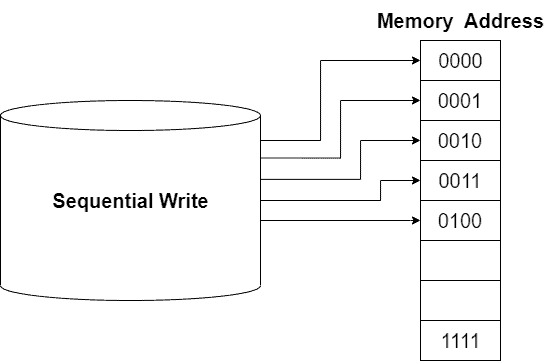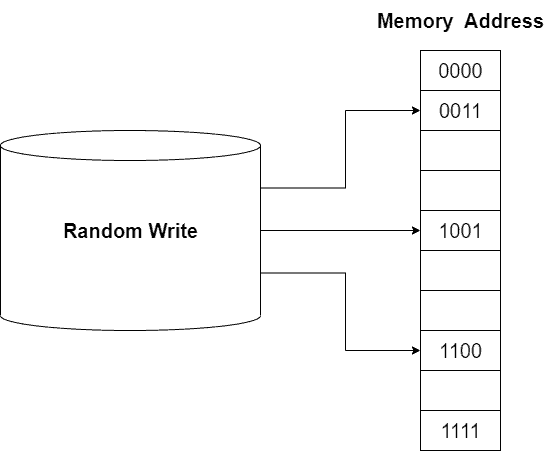1. 概述
在本文中,我们将深入探讨两种对存储性能影响显著的写入方式:顺序写(Sequential Write) 和 随机写(Random Write)。
同时,我们也会总结它们之间的核心差异,帮助你更好地理解它们在不同场景下的表现和适用性。
2. 顺序写简介
在大多数数据密集型应用中,比如流式分析、虚拟现实引擎等,读取性能通常是存储系统的瓶颈。虽然闪存技术在不断进步,但为了满足日益增长的数字化需求,我们仍需更智能的存储解决方案。
顺序写指的是以连续的方式将数据写入存储介质。这种方式往往能带来更高的写入性能:
✅ 存储设备对顺序写做了优化
✅ 更好地利用设备的带宽和吞吐能力
✅ 减少磁盘寻道时间(在机械硬盘中尤为明显)
下图展示了顺序写的过程:

顺序写主要用于传统的机械硬盘(HDD)。这类设备的结构决定了它们更适合按顺序读写数据。例如,当我们需要移动某些数据块时,通常需要按顺序重写数据。HDD在写入时,读写头可以沿着磁道顺序移动,从而减少延迟。
数据在HDD中是按磁道(track) 和 扇区(sector) 来组织的。当数据以顺序方式写入时,读写头可以快速连续地访问多个扇区,从而提升效率。
3. 随机写简介
随机写指的是以非连续、跳跃的方式将数据写入存储设备。相比顺序写,随机写通常会带来更低的性能:
❌ 无法充分利用设备的带宽
❌ 需要频繁定位写入位置,增加延迟
❌ 数据分布零散,可能影响后续读取效率
下图展示了随机写的数据分布:

随机写主要应用于固态硬盘(SSD)。SSD没有机械部件,因此可以在任意位置快速写入数据。这种特性使得SSD非常适合需要高并发、低延迟的场景,比如数据库操作、虚拟化平台等。
此外,SSD在写入数据的同时还能进行校验,确保数据正确性。这意味着它可以同时执行多个写入任务,而不会像HDD那样受限于磁头移动速度。
4. 核心区别对比
理解顺序写和随机写之间的区别,对于构建高性能、可扩展的存储系统至关重要,尤其是在现代数据中心和云环境中。
下面是它们的核心差异对比:
| 特性 | 顺序写 | 随机写 |
|---|---|---|
| 数据分布 | 连续的数据流 | 数据碎片化 |
| 写入顺序 | 按照顺序写入 | 没有固定顺序 |
| 存储利用率 | 充分利用设备容量 | 仅利用部分容量 |
| 写入速度 | 更快 | 相对较慢 |
| 是否等待 | 需等待当前数据写完才能继续 | 可并行处理多个写入任务 |
📌 小结:
- HDD更适合顺序写,随机写会显著降低性能
- SSD在随机写方面表现更优,但依然在顺序写上有不错的表现
- 实际应用中,应根据业务场景选择合适的存储方式和设备
5. 总结
本文我们讨论了顺序写和随机写的定义、应用场景及核心区别。
在实际开发和运维中,了解这些写入模式可以帮助我们更好地优化系统性能,避免“踩坑”于低效的I/O操作中。
如果你正在设计一个高性能的存储系统或处理大量写入任务,建议优先考虑顺序写模式,并根据硬件特性进行调优。